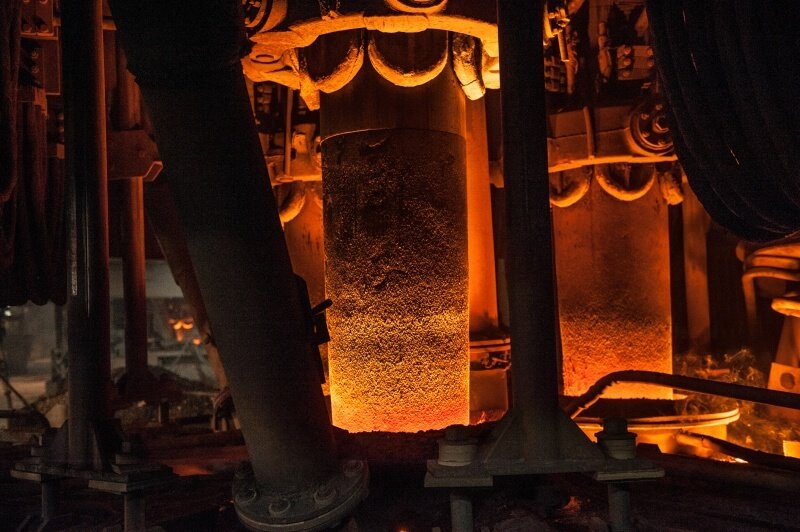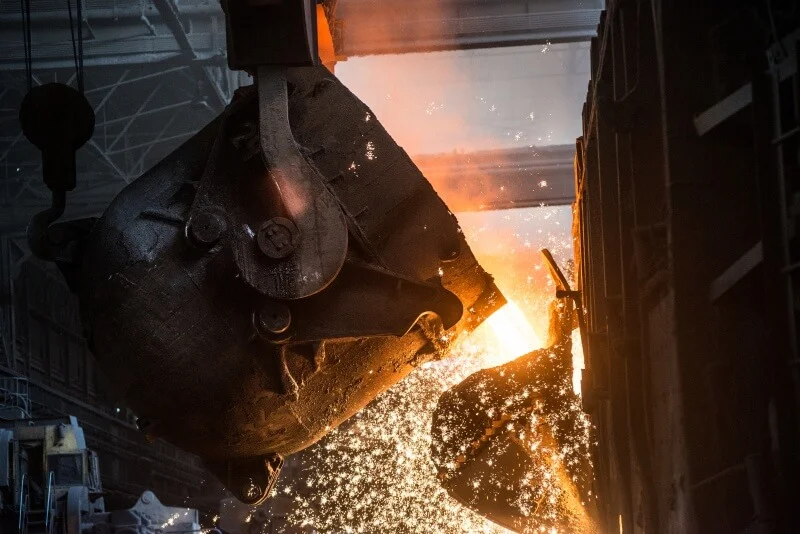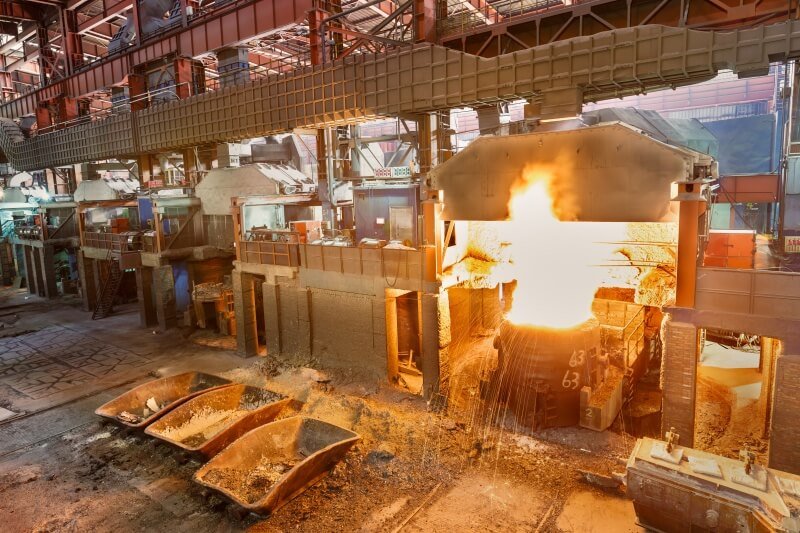Designing a complex aluminum part and unsure which process to choose? Pick the wrong route and you’ll face poor quality, blown budgets, and delays. This guide shows when die-casting aluminum is the right path, so your part hits spec without schedule or cost overruns.
The pressure is on. A poor choice could mean your parts lack the required tight tolerances or surface finish, leading to costly rework or complete failure in application. This decision directly impacts your product’s performance and your company’s bottom line.
This guide is your answer. We will explain exactly what aluminum die casting is and walk you through the five most important things you need to know about it. By the end, you will be able to confidently determine if this process is the right solution for your manufacturing needs.

The process of die-casting aluminum
What is the basic manufacturing flow?
The process begins by heating aluminum ingots to high temperatures until they are completely molten. This liquid metal is then forced into a steel die under immense pressure. Once the aluminum solidifies, the part is ejected.
The bottom line is this: high-pressure injection is key to filling every detail of the mold.
- Melting: Aluminum alloy ingots are heated until fully liquid.
- Injection: Molten metal is injected into the die cavity.
- Ejection: The solidified part is removed from the die.
What is a die or mold in this process?
A die, or mold, is a tool made from two steel halves that form the cavity of your part. These robust dies are engineered for creating complex shapes with high precision. Because they are made of steel, they can be reused thousands of times.
Here’s the kicker: this reusability makes die casting cost-effective for large production runs.
- Construction: Made of two precision-machined steel halves.
- Function: Creates the cavity for the final part shape.
- Lifespan: Reusable for high-volume manufacturing.
Key Takeaway: The die-casting process uses high-pressure injection of molten aluminum into a reusable steel mold. This fundamental flow enables the high-speed production of precise, complex parts with a smooth finish.
| Feature | Description |
|---|---|
| Material | Molten Aluminum Alloy |
| Tooling | Reusable Steel Die (Mold) |
| Method | High-Pressure Injection |
| Result | Solidified, near-net-shape part |
This analysis shows that the process is optimized for repeatability and precision.
Benefits of die-casting aluminum parts
Why choose it for complex shapes?
Die casting is exceptional at producing parts with intricate geometries that are difficult to achieve with other methods. It consistently delivers the tight tolerances required for complex products like automotive transmissions. This makes it a superior choice over processes like extrusion.
You might be wondering: how does it achieve this?
- Capability: Creates highly complex geometries.
- Precision: Maintains tight dimensional tolerances.
- Application: Ideal for parts like engine blocks.
What surface finishes can you expect?
Parts produced through die casting have a naturally smooth surface finish right out of the mold. This high-quality finish often reduces or completely eliminates the need for secondary machining. This saves you both time and money.
The reality is simple: a better finish from the start means less post-processing work for you.
- Quality: Produces smooth surfaces right from the mold.
- Efficiency: Minimizes the need for secondary machining.
- Versatility: Accommodates both large and small parts.
Key Takeaway: Die-casting aluminum is the go-to method for creating complex parts with tight tolerances and excellent surface finishes, reducing downstream costs and ensuring product consistency.
| Benefit | Advantage for Your Part |
|---|---|
| Complex Shapes | Ability to produce intricate designs. |
| Tight Tolerances | Ensures high precision and consistency. |
| Surface Finish | Reduces need for secondary finishing. |
These benefits make it a superior choice for high-specification components.
Design for die-casting aluminum: Molds
What is a parting line?
The parting line is the mark left on a cast part where the two halves of the mold meet. You must consider the location of this line in the early design stages. Proper placement ensures the part can be ejected cleanly without compromising its integrity.
Here’s the kicker: a well-placed parting line is critical for both aesthetics and function.
- Definition: The seam where mold halves join.
- Importance: Affects part ejection and final appearance.
- Consideration: Must be planned in the initial die design.
Why are injection points important?
Injection points are the gates through which molten metal enters the die cavity. Their placement and number are critical for ensuring the die fills completely. This is especially important for complex geometries to prevent defects.
What does this mean for you? Proper injection point design prevents weak spots.
- Purpose: Allow molten metal to enter the die.
- Strategy: Multiple points can be used for complex parts.
- Result: Ensures complete filling and structural integrity.
Key Takeaway: Strategic design of mold features like parting lines and injection points is crucial for successful die casting. These elements directly impact part quality, cosmetic appearance, and manufacturing feasibility.
| Mold Design Element | Key Consideration |
|---|---|
| Parting Line | Location impacts part ejection and aesthetics. |
| Injection Points | Placement ensures complete die fill and part integrity. |
Careful planning of these features is non-negotiable for quality outcomes.
Design for die-casting aluminum: Parts
What about part wall thickness?
While modern technology has largely removed strict minimums, designing for consistent wall thickness is still preferred. Uniform thickness helps the molten metal flow evenly and cool at a consistent rate. This minimizes internal stresses and potential defects in the final part.
So, what’s the solution? Aim for uniformity wherever possible in your design.
- Guideline: Consistent wall thickness is ideal.
- Benefit: Promotes even metal flow and cooling.
- Impact: Reduces risk of defects and improves part strength.
Key Takeaway: Although die casting is flexible, designing parts with consistent wall thickness is a best practice. It simplifies the casting process and enhances the structural integrity and quality of the final product.
| Part Design Feature | Best Practice |
|---|---|
| Wall Thickness | Strive for consistency to ensure even cooling. |
| Draft Angles | Incorporate slight tapers for easy part ejection. |
Following these part design rules simplifies manufacturing significantly.
Comparing die-casting aluminum methods
What is green sand casting?
Green sand casting uses molds made from wet sand, making it a less expensive alternative. However, this method is also less precise than die casting. It is generally used for simpler shapes where tight tolerances are not a primary concern.
What’s the real story? It’s cheaper upfront but sacrifices precision and finish.
- Mold Material: Wet sand.
- Cost: Less expensive tooling than die casting.
- Precision: Lower dimensional accuracy and rougher finish.
What is permanent mold casting?
Permanent mold casting uses a reusable mold like die casting but relies on gravity to pour the molten metal. This process can produce stronger parts than die casting. However, it cannot match the speed or intricacy of high-pressure die casting.
Think about it: strength might improve, but you lose speed and complexity.
- Method: Gravity-poured molten metal.
- Benefit: Can produce stronger parts.
- Limitation: Slower cycle times and less intricate shapes.
Key Takeaway: While green sand and permanent mold casting have their uses, high-pressure die casting offers superior dimensional accuracy and a finer surface finish, often eliminating the need for post-processing.
| Casting Method | Key Differentiator | Best For |
|---|---|---|
| Die Casting | High-pressure injection | Complex, high-volume parts |
| Sand Casting | Sand mold | Low-cost, simpler parts |
| Permanent Mold | Gravity pour | Stronger, less complex parts |
The choice depends on your project’s specific needs for precision, volume, and cost.
Why choose die-casting aluminum?
How does it improve tolerances?
High-pressure die casting provides superior dimensional accuracy compared to other casting methods. The steel die and high-pressure injection process ensure that each part is a near-perfect replica of the mold. This consistency is critical for parts that need to fit together precisely.
The short answer is: it delivers unmatched repeatability and precision.
- Process: High-pressure injection into a steel mold.
- Result: Excellent dimensional accuracy.
- Advantage: Tighter tolerances than sand or permanent mold casting.
What about the surface finish?
The surface finish from die casting is exceptionally smooth and often meets final product specifications without any additional work. This is a significant advantage over sand casting, which leaves a rough surface. A superior finish from the start reduces total production time and cost.
The takeaway is clear: you get a better-looking part with less effort.
- Quality: Superior finish compared to other casting methods.
- Benefit: Often eliminates need for surface treatments.
- Efficiency: Reduces post-casting labor and costs.
Key Takeaway: Die-casting aluminum is the superior choice when your project demands tight tolerances and an excellent surface finish. These benefits translate directly into higher-quality parts and lower overall production costs.
| Attribute | Die Casting Advantage |
|---|---|
| Tolerances | Superior dimensional accuracy and consistency. |
| Surface Finish | Smooth, clean surfaces that reduce finishing needs. |
These attributes make it the premier choice for precision components.
Finishing for die-casting aluminum
What if imperfections exist?
Die-cast parts have an excellent finish but may have minor imperfections like seams where the mold halves meet. These can be easily addressed through processes like sanding, sandblasting, or orbital sanding. This ensures your part meets all cosmetic and functional specifications.
The truth is: minor finishing is a simple step to achieve a perfect part.
- Imperfections: Minor seams or marks can occur.
- Solutions: Sanding or sandblasting remove them.
- Goal: Meet your exact surface requirements.
What coatings can you apply?
You can apply a protective or decorative coating to the finished part for enhanced durability or aesthetics. Powder coating is a common and effective choice. This adds a layer of protection against corrosion and wear while offering a range of color options.
But wait, there’s more: coatings enhance both performance and appearance.
- Purpose: Add protection or improve aesthetics.
- Common Option: Powder coating provides a durable finish.
- Other Finishes: E-coating is also available.
What other modifications are possible?
Post-casting modifications can further enhance your part’s properties. Shot peening is a cold working process used to improve fatigue resistance. Additionally, features like threaded holes can be added through drill tapping.
What does this mean for your project? You can customize parts for specific needs.
- Strength: Shot peening improves fatigue life.
- Functionality: Drill tapping adds threaded features.
- Customization: Parts can be modified after casting.
Key Takeaway: A wide range of finishing and modification options are available for die-cast aluminum parts. These processes allow you to correct minor imperfections, add protective coatings, and enhance mechanical properties to meet precise application requirements.
| Finishing Process | Purpose |
|---|---|
| Sanding | Removes minor imperfections like seams. |
| Powder Coating | Adds a durable, decorative finish. |
| Shot Peening | Improves fatigue resistance of the part. |
These options provide the flexibility to perfect your component.
Alloys for die-casting aluminum
What is the most common alloy?
Alloy A380 is the “jack-of-all-trades” and the most commonly used alloy for die casting. It provides an excellent combination of casting properties, mechanical strength, and thermal conductivity. This balance makes it suitable for a wide variety of products.
Here’s a simple breakdown: A380 is a versatile and reliable choice for most applications.
- Designation: A380
- Properties: Good balance of strength and castability.
- Use Case: General-purpose applications.
What alloy is best for wear resistance?
For applications requiring exceptional hardness and wear resistance, B390 is the top choice. It has the lowest ductility of all cast alloys but offers outstanding durability. This is why it is used for high-stress parts like automotive engine blocks.
Now, this is where it gets interesting: B390 is designed for extreme durability.
- Designation: B390
- Properties: High hardness and wear resistance.
- Use Case: Automotive engine blocks.
Which alloy resists corrosion best?
When your part requires superior corrosion resistance and pressure tightness, A360 is an excellent choice. It also has very good fluidity when molten, which helps in casting complex shapes. This makes it ideal for parts exposed to harsh environments.
The bottom line is this: A360 is perfect for durable, pressure-tight parts.
- Designation: A360
- Properties: Excellent corrosion resistance and pressure tightness.
- Use Case: Parts requiring high durability in harsh conditions.
Key Takeaway: Selecting the right alloy is critical and depends entirely on your application’s needs. Whether you need the balanced properties of A380, the wear resistance of B390, or the corrosion resistance of A360, there is a specific alloy to match your requirements.
| Alloy | Key Feature | Common Application |
|---|---|---|
| A380 | Versatile, all-purpose | Wide variety of products |
| B390 | High wear resistance | Engine blocks |
| A360 | Excellent corrosion resistance | Pressure-tight components |
Matching the alloy to the application is a critical design decision.
Cost of die-casting aluminum
Is this an expensive process?
Die casting can have a higher initial tooling cost compared to other methods like sand casting. Creating a high-precision steel die is a significant investment. This upfront cost is the primary financial consideration when choosing this process.
Here’s the deal: the initial investment in the mold is the biggest expense.
- Main Cost: High initial tooling (die) cost.
- Comparison: More expensive upfront than sand casting.
- Factor: A major consideration for project budgeting.
When is the cost justified?
The high initial cost is justified when your design has high complexity and you need to produce a large volume of parts. The low per-part cost in high-volume runs quickly offsets the initial tooling investment. This makes it highly economical for mass production.
Why does this matter? It’s about achieving a low cost per unit at scale.
- Justification: High complexity and high production volume.
- Benefit: Low per-part cost in mass production.
- ROI: The initial investment pays off over large runs.
Key Takeaway: While die-casting aluminum requires a significant upfront investment in tooling, it becomes highly cost-effective for high-volume production runs. The trade-off between tooling cost and per-part price makes it ideal for complex, mass-produced components.
| Production Volume | Cost-Effectiveness of Die Casting |
|---|---|
| Low Volume | Generally not cost-effective due to high tool cost. |
| High Volume | Highly cost-effective as tool cost is amortized. |
This cost structure makes it a strategic choice for scaling production.
Uses for die-casting aluminum parts
What industries use this process?
Die-casting aluminum is the method of choice for many key industries. These include automotive, industrial, and telecommunications manufacturing. It is also heavily used to produce electrical enclosures, hydraulic components, and lighting fixtures.
It boils down to this: many high-tech industries rely on this process.
- Automotive: For engine and transmission components.
- Telecommunications: For enclosures and housings.
- Industrial: For durable equipment parts.
What are some specific product examples?
Concrete examples of die-cast parts are all around us, from complex automotive transmissions to sturdy electrical enclosures. The process is also used to create durable engine blocks and lightweight lighting components. These examples highlight the versatility and precision of the method.
So, what’s the bottom line? You can find die-cast parts in many everyday products.
- Automotive: Transmissions, engine blocks.
- Electrical: Enclosures, housings.
- Lighting: Heat sinks, fixtures.
Key Takeaway: Die-casting aluminum is a critical manufacturing process for numerous industries, especially where strength, complexity, and light weight are required. Its ability to produce intricate and durable parts makes it indispensable for automotive and electronics manufacturing.
| Industry | Common Die-Cast Aluminum Parts |
|---|---|
| Automotive | Engine blocks, transmission housings, pistons. |
| Industrial | Hydraulic components, pump housings. |
| Telecommunications | RF filter housings, electrical enclosures. |
The widespread use across industries demonstrates its versatility and reliability.
Conclusion
Choosing the right manufacturing process is no longer a roadblock to producing high-quality, complex aluminum parts. Die casting solves the challenge of achieving intricate designs with tight tolerances and excellent finishes at high volumes.
Our professional aluminum die casting services provide end-to-end support, from expert die design to ISO-certified manufacturing and finishing. Ready to see if die casting is right for your project? Request a free quote today.
We aim to be your trusted manufacturing partner, delivering consistent quality and engineering excellence for every part you create.
FAQ Section
Q1: Can I use die-casting aluminum for very small parts?
Yes. Die casting is capable of producing both large and small parts with high precision, making it a versatile choice for various component sizes.
Q2: What’s the best die-casting aluminum alloy for automotive engines?
B390 is often the best choice. Its outstanding wear resistance and high hardness are ideal for high-stress applications like engine blocks.
Q3: How do I know if the high volume justifies die-casting aluminum costs?
You should conduct a cost-benefit analysis. If the per-part cost reduction at high volumes outweighs the initial tooling investment, it is justified.
Q4: Can I powder coat a die-casting aluminum part?
Absolutely. Powder coating is a common finishing option that provides a durable and decorative coating for die-cast aluminum parts.
Q5: What’s the main difference from sand casting?
The key differences are precision and finish. Die-casting aluminum uses a steel mold and high pressure, resulting in much better tolerances and a smoother surface than sand casting.




